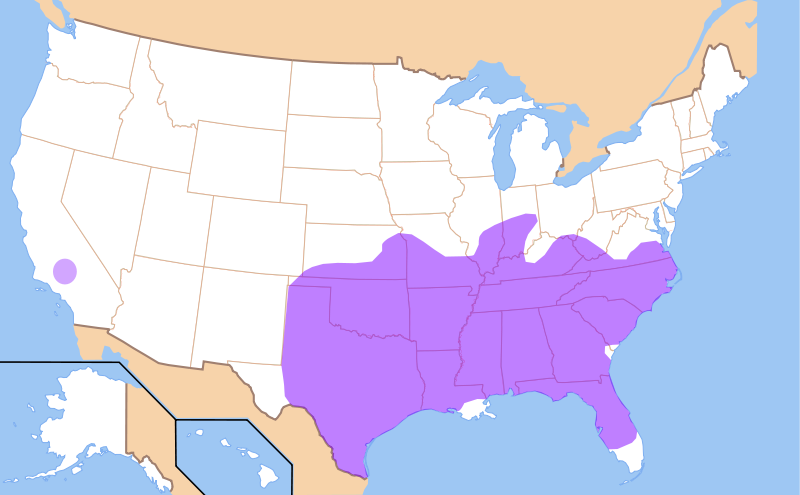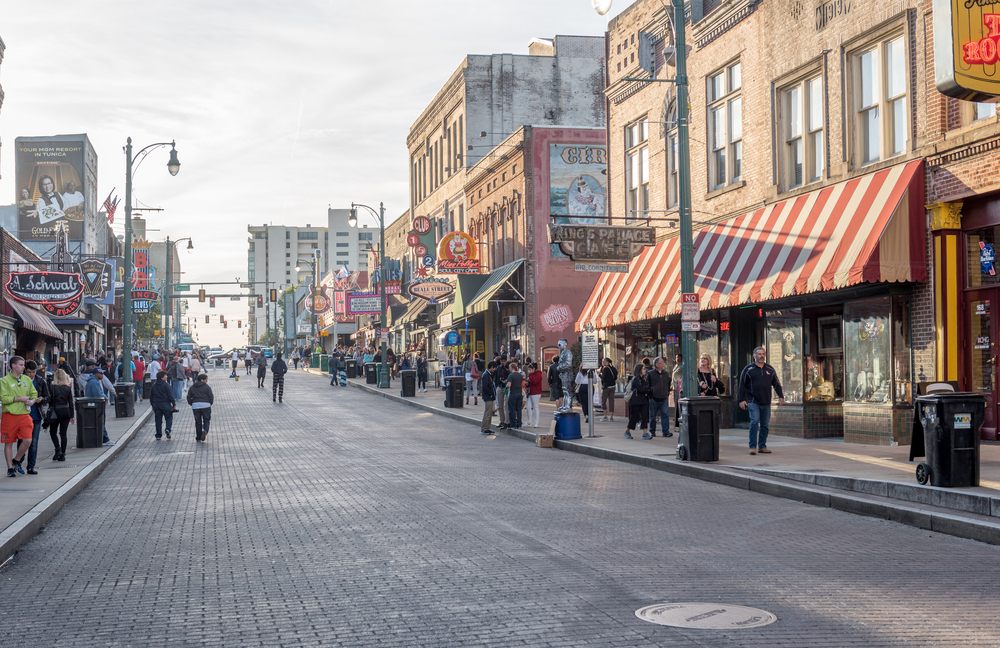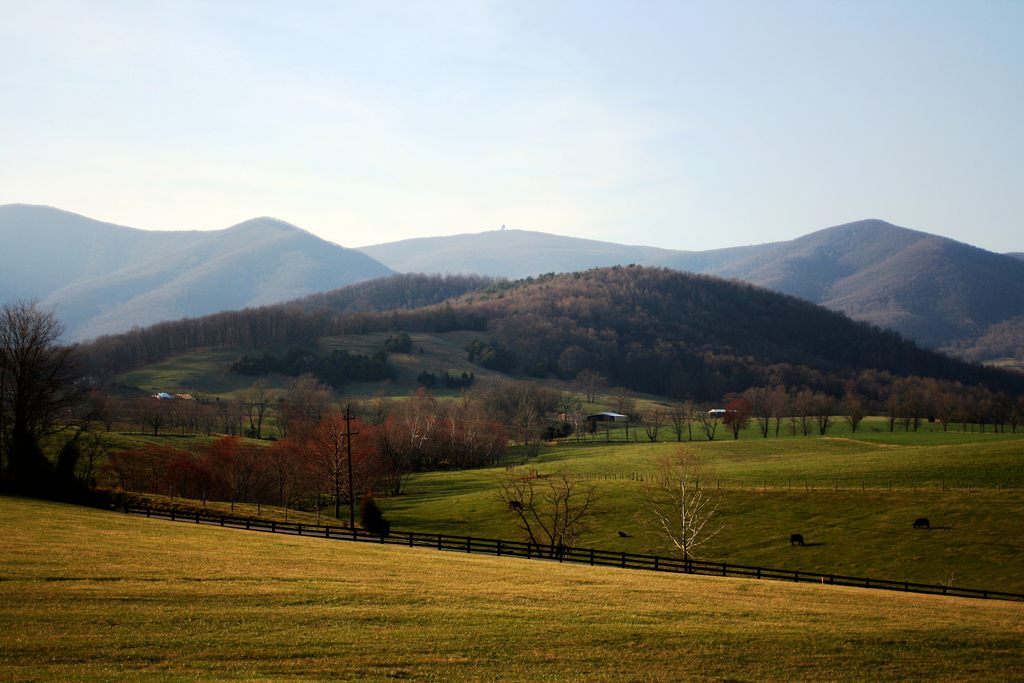Why Northerners Think All Southerners Have One Accent
A small North Carolina island shows how different the Southern accent can be.
The Southern states contain many micro-accents and dialects. (Photo: hans.slegers/shutterstock.com)
The tiny island of Ocracoke, off the coast of North Carolina, is unimpeachably Southern. The most remote of the Outer Banks islands, founded by Sir Walter Raleigh and the point of capture for Blackbeard the pirate, it’s a favorite vacation destination throughout the South—sort of the Nantucket for those below the Mason Dixon line. And yet if you were to speak to an Ocracokian, you wouldn’t necessarily know it by their accent.
In fact, there’s a pretty fair chance you’d have no idea where they’re from.
Being a small island, having been settled by Europeans very early, and being isolated from other parts of the South, Ocracoke has a singularly strange accent, some parts of which do not sound Southern at all. The most classic accent example in Ocracoke is appropriately nautical: “high tide.” Ocracokians do not say “hah tahd,” as the rest of the South would. Instead they say “hoi toid.” It’s a weird remnant from colonial days, trapped in amber.
The fact that Ocracoke has a weird accent is not, in itself, weird; there are plenty of pockets of strange accents scattered around the country and the world. What makes Ocracoke so unusual is that it’s located in the South, which linguistically does not really operate in the same way as other regions.
The South is, just like the North, composed of dozens of micro-accents and dialects, but Southern accents do not really divide up evenly as they do in the North. With much greater population density, Northeastern accents can be split fairly evenly by geography: your proximity to the cities of Boston, New York City, and Philadelphia has a large effect on your speech patterns. The South is divided in much more peculiar ways, and even the devoutly Southern linguists I spoke to, all of whom were very proud and defiant about their own Southern speech, said they’d essentially be unable to distinguish a Houstonian from an Atlantan from a Memphian.
But that doesn’t mean those differences aren’t there—they’re just split in a different way. If you want to really distinguish between Southern speakers, you’ll have to readjust what kind of information you’re hoping to find.
The first problem with defining a Southern accent is agreeing on what is the South. “If you ask 50 people to draw a circle around what they think is the South, you’ll get 50 different responses,” says Dennis Preston, a linguist (and proud Southerner) who specializes in the ways non-linguists perceive accents. Simply going by any areas which include elements typically associated with the South will include parts of many states not normally assumed to be Southern at all: as far north as the southern sections of Pennsylvania, Indiana, Ohio, and Illinois.

Downtown Atlanta, Georgia. (Photo: Sean Pavone/shutterstock.com)
There are really only a few major linguistic quirks that associate a speaker as “Southern” to the vast majority of Americans. One is the monophthization of the vowel sound “eye,” as in the word “guide.” In most of the country, that’s pronounced as a diphthong, or compound vowel: it moves from “ah” to “ee.” In the South, that’s flattened into a monophthong, which is made up of only one vowel, so “guide” would sound somewhere in between “gad” and “god.”
Preston conducted a study in which he took pronunciations of the word “guide” by speakers in several cities on a North/South spectrum, ranging from Saginaw, Michigan straight south to Dauphin, Alabama. Amazingly, the subjects were able to not only pick out the Southern versus the Northern speakers, but could actually order them, on average, correctly, based on just how flattened that vowel was.
Another monophthongization is in the “oy” vowel, which outside the South is a compound vowel made up of “oh” and “ee.” In the same way “guide” is flattened, so is “boil,” becoming closer to “ball.”
Perhaps the most well-studied quirk is one used by Bill Labov to form a map of the South. (Labov, of the University of Pennsylvania, is easily the most important American linguist of the 20th century, maybe ever. I have literally never conducted an interview with a linguist in which Labov wasn’t mentioned.) That quirk is known as the pin-pen merger. Throughout the South, those two words are homophones, sounding the same; this is not the case anywhere else in the country.

A map based on The Atlas of North American English by W. Labov, S. Ash & C. Boberg, showing where in the US the words “pin” and “pen” are pronounced the same - known as the “pin-pen merger”. (Photo: Angr/CC BY SA 2.5)
There are many, many more speech patterns that are associated with the South, but some of those are waning in use, or are not used in certain sections of the region, or are only used by people of a certain age, class, race, or some other signifier. The fact that those few widely recognized features are part of such a gigantic area is, frankly, crazy; there’s no other region that includes so many obvious features in nearly 100% of speakers. Imagine even talking about a “Northeastern” accent. Impossible!
With a few exceptions, which I’ll get to in a second, the major dividing lines in the South are not geographic. “Currently, you’re starting to see a big rural/urban split in the 20th and 21st centuries,” says Paul Reed, a specialist in Appalachian English at the University of South Carolina. This is not really true in the rest of the country; someone from Long Island or New Jersey has, with some variations due to class, age, or ethnic identification, the exact same accent as someone from Manhattan or Brooklyn. A farmer from rural Wisconsin has the same accent as a broker in Madison or Milwaukee. Not so in the South.
“The cities in the South are tending to not sound quite as ‘Southern’ as they have in the past,” says Reed. What Reed means is that native speakers from the largest Southern urban/suburban areas—Atlanta, Memphis, Louisville—still sound identifiably Southern, but, well, kind of less so than they did, and less so than rural speakers still do.

Kevin Spacey as Frank Underwood in House of Cards, with a rural South Carolina accent. (Photo: Courtesy Netflix)
That’s most obvious in what’s referred to outside the South (and outside the linguistic community) as the “drawl.” Within linguistics, it’s sometimes called “vowel breaking,” which makes it sound kind of bad. Really what Southerners are doing is adding complexity and layers to certain vowels. Think of the word “friend.” Outside the South, that’s a very simple vowel sound: “eh.” Frehnd. But in the rural South, that vowel sound has a great deal of complication: it turns that one vowel sound into not only two, but maybe even three or four different vowels. A rural Southern speaker might turn “friend” into “free-ay-ind.” The word “drawl” implies that people are speaking more slowly, which isn’t really the case: what they’re doing is cramming more sounds into a single word, which Northern ears interpret as taking more time.
In urban and suburban centers, that word “friend” is still more complex than in the North and West, but not quite as complex; maybe it only has two distinct vowel sounds, rather than three or four.
Another example: remember our old friend, “guide”? So that monophthization actually has a few more layers that can tell you where a Southerner might be from—or, in a very fun example, reveal that Kevin Spacey’s rural South Carolina accent in House of Cards is not quite right.
So that monophthization happens throughout the South when that vowel sound comes before what’s called a “voiced” consonant. The difference between a voiced and a voiceless consonant is that if you try to make the shortest possible sound with that consonant you can, a voiced consonant will vibrate your vocal cords, where a voiceless will not. The sound “k” is voiceless; you can make it without actually vibrating your vocal cords. But “d” is voiced; if you try to just make the sound of that letter, it’ll either come out “duh,” vibrating your vocal cords, or more like “t” if you try not to vibrate them.

Downtown Memphis, Tennessee. (Photo: photosounds/shutterstock.com)
Throughout the South, that “eye” sound is turned into “ah” when it comes before a voiced consonant, which is why “guide” sounds the way it does. But only in rural areas do people do that same sound change before a voiceless consonant. So if somebody pronounces “right” like “raht,” you’ll know they’re from the rural South; city-dwellers pronounce that word pretty much the same way Northerners do. Reed mentioned that Spacey’s character, though he’s supposed to be from rural South Carolina, voices his vowels in a way more similar to somebody from an urban area like Charleston.
Besides the urban/rural split, you’d be surprised at how consistent the Southern accent is across state lines. Even many speakers in Texas, that most independent of Southern states, differ very little from from demographically similar speakers in other Southern states. Just like in the rest of the South, some speakers from Texas will distinguish between “which” and “witch” by giving the former a little staticky, cough-like oomph. Some won’t! Some Texans will distinguish between “horse” and “hoarse,” with the latter sounding a bit like “harse.” And, of course, some won’t. Some have one of my all-time favorite linguistic features, the excellently-named “intrusive ‘r,’” in words like “wash,” so that would sound like “warsh.” And some won’t.
Even some of the grammatical features most associated with Texas are plenty common throughout the South. “Y’all,” say. Or the double modal: in much of the country, you only use one of a selection of words which indicate, say, how likely something is to happen. In Texas—and in many speakers throughout the South—you can double those up, which is how you end up with a sentence like “I might could go to the beach.”
Same thing with the phrase “fixing to,” or as it’s been compressed by black Southerners, “finna.” Those are pretty common in Texas, sure—but also in Arkansas, southern Missouri, Oklahoma, and northern Louisiana, among other places.

Ocracoke Island lighthouse, off the coast of North Carolina. (Photo: David Byron Keener/shutterstock.com)
These often tend to vary by town or other hyper-local construction throughout the South. So Reed, who is from East Tennessee, can distinguish between East, Central, and West Tennessee, being so familiar with the tiny differences and degrees of differences that separate those regions. But someone from North Carolina would not be able to do anything of the sort, and Reed himself notes that he can’t perform anywhere near that level of identification with anyplace other than Tennessee.
A few Southern coastal cities, most famously Charleston and Savannah, were until very recently non-rhotic, but studies indicate that that feature is disappearing amongst the younger generation. That said, non-rhoticity is so associated with those prestigious cities that many residents will still drop their “r” sounds…in just a few famous examples. Some Charlestonians, for example, will pronounce the name of their city as “Chahleston,” but will not drop the “r” in other places where a truly non-rhotic speaker would, as in “yard” or “swear.”
South Florida does not show any Southern features whatsoever. As in almost all other ways, Florida makes no sense. Like that island on the Outer Banks.
The pockets of non-Southern Southern accents are scattered across the region. Appalachia is an area of active research, as academics parse its unique sing-song quality of speech. Southern Louisiana, better known as New Orleans and Cajun country, has their own particular variety of English that, well…it certainly has some Southern influence, but not in some of the usual places, and the hefty dose of Acadian French and Spanish and African influence has left it in a fairly unique situation. In fact, New Orleans English has at least as much in common with, of all places, New York City English as it does with, say, Dallas English.

The Blue Ridge Mountains. (Photo: Gafoto/CC BY 3.0)
Many New Orleanians also do not monophthize the classic “eye” sound, making them sound almost Northern. New Orleanians of a certain age might say “turlet” for “toilet.” That coil-curl merger is unheard of in the South, and in fact is most identified with a disappearing accent of the most Yankee place there is: New York City. Until the mid-20th century, New Yorkers had a similar mutation in that “er” sound, turning “Thirty-Third Street” into “Thoity-Thoid” street. You can still hear it in recordings of FDR or old Marx Brothers movies.
The entire South, save that one pocket of Charleston and Savannah, sort of, is rhotic, meaning they fully pronounce “r” after certain vowels. Non-rhoticity is rare in North America; the one big exception is the Boston area and its Hahvahd Yahd. Even Ocracoke, which some atlases don’t even recognize as linguistically Southern, pronounces their “r” sounds.
But the Outer Banks island is still a linguistic oddity. Its colonial throwback linguistics is such an anachronism that it’s possible nowhere else in the South has ever sounded like this. In fact, the only places where you might hear someone pronounce “high tide” as “hoi toid” are in, well, another South: Southwest England, like Cornwall and Devon. Even there, you might have to hop in some kind of time machine to hear anything like that accent. Much easier would be just heading out to Ocracoke. The beaches are supposed to be really nice, too.








Follow us on Twitter to get the latest on the world's hidden wonders.
Like us on Facebook to get the latest on the world's hidden wonders.
Follow us on Twitter Like us on Facebook